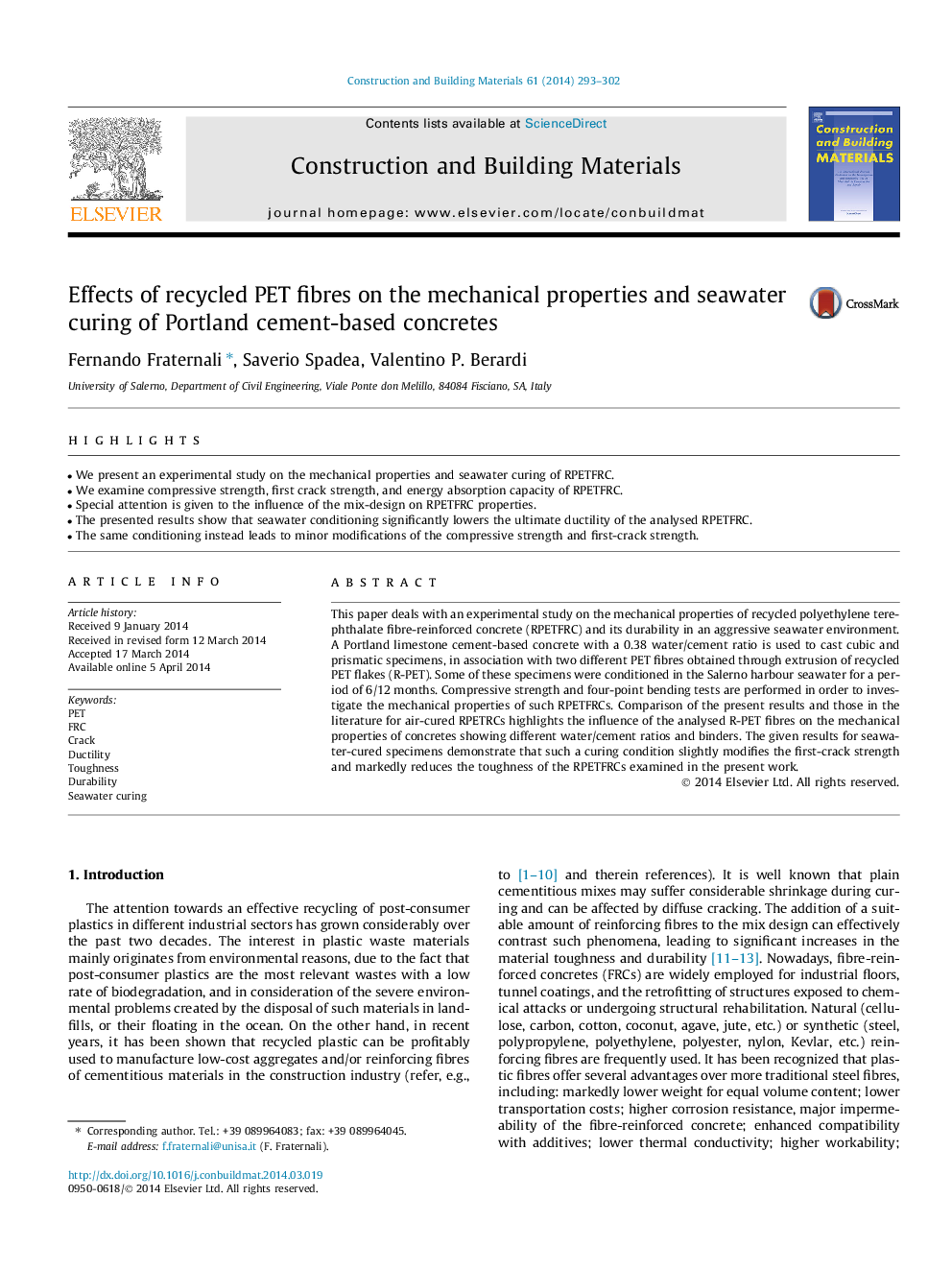| Article ID | Journal | Published Year | Pages | File Type |
|---|---|---|---|---|
| 257663 | Construction and Building Materials | 2014 | 10 Pages |
•We present an experimental study on the mechanical properties and seawater curing of RPETFRC.•We examine compressive strength, first crack strength, and energy absorption capacity of RPETFRC.•Special attention is given to the influence of the mix-design on RPETFRC properties.•The presented results show that seawater conditioning significantly lowers the ultimate ductility of the analysed RPETFRC.•The same conditioning instead leads to minor modifications of the compressive strength and first-crack strength.
This paper deals with an experimental study on the mechanical properties of recycled polyethylene terephthalate fibre-reinforced concrete (RPETFRC) and its durability in an aggressive seawater environment. A Portland limestone cement-based concrete with a 0.38 water/cement ratio is used to cast cubic and prismatic specimens, in association with two different PET fibres obtained through extrusion of recycled PET flakes (R-PET). Some of these specimens were conditioned in the Salerno harbour seawater for a period of 6/12 months. Compressive strength and four-point bending tests are performed in order to investigate the mechanical properties of such RPETFRCs. Comparison of the present results and those in the literature for air-cured RPETRCs highlights the influence of the analysed R-PET fibres on the mechanical properties of concretes showing different water/cement ratios and binders. The given results for seawater-cured specimens demonstrate that such a curing condition slightly modifies the first-crack strength and markedly reduces the toughness of the RPETFRCs examined in the present work.
